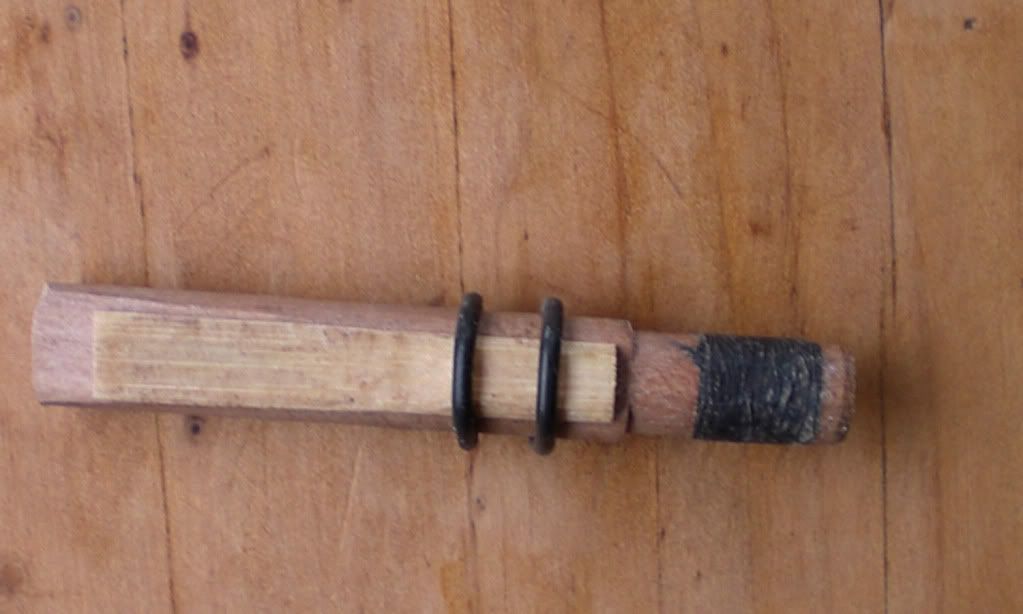Niko Birbilis wrote: Unfortunately among the instruments I play, none involve me actually blowing over a reed, so I really don't know too much about how they work, in terms of producing sound.
Niko - all the reeds we have described so far are types of 'beating reed'. They work by opening and closing an opening very fast allowing air to enter the resonating air column (the long pipe of the instrument) and then stopping it. The rapid starting and stopping of the air flow sets up a wave which is the sound we hear. The length of the air column regulates how frequently the reed opens and closes - the longer the column the less frequently it opens and closes and the lower the pitch. Much of the difficulty of reed instruments is getting the reed to work well within the frequency ranges of the air column.
They are called beating reeds because the opening and closing is achieved by the reed beating against something:
The straw reeds are
double reeds with both lips beating against each other to open and close. Double reeds made of cane are found in the chanters of many types of highly evolved bagpipes such as the Great Highland Bagpipes, Scottish smallpipes and border pipes as well as the Irish uileen pipes.
Yuri's wood + cane two piece reeds have a
single reed which beats against the body to open and close the hole in the wooden body. This type of reed is found as the drone reeds in bagpipes mentioned above. You can substitute thin plastic for the cane - the trick is getting the thickness right.
The one piece cane reeds are also single reeds constructed entirely from the cane. These reeds would be the traditional reed in many types of bagpipe including the instrument you pictures as well as the swedish bagpipes and the welsh pibgorn. You could use a two piece single reed for this application and you may find them easier to construct than one piece cane reeds.
The
membrane reed beats against the opening of the pipe. They are fun to mess around with but I don't know of any serious bagpipes that use them.
Rob


